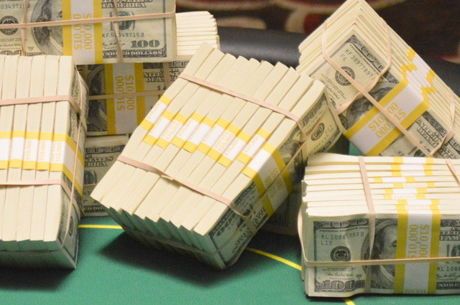Strategy Vault: Cold Four-Bet Bluffing with Randal Flowers, Pt. 1

Digging deep into the PokerNews strategy archives can lead to a buried treasure, so we'll be unearthing a few gems for your viewing pleasure. In this edition of the Strategy Vault series, we'll look back at the first part of a piece from Randal Flowers about cold four-bet bluffing.
Flowers competes in the toughest tournament fields live and online, and does so with great success. With numerous five-figure cashes and two World Poker Tour titles, Flowers�� live tournament winnings exceed $2 million. To be successful against the best and most aggressive players in the world, Flowers has had to learn to adjust and add wrinkles to his game. One such weapon is a cold four-bet, and Flowers talked to PokerNews about the ins and outs of using the move.
For those who don��t know, can you define exactly what a cold four-bet is?
It��s when there has been a raise and a reraise, the second of which is also known as a three-bet, and you can shove all in or you can reraise over the top. It��s called a cold four-bet because you��re not the original raiser. When the original raiser does it, it��s just called a four-bet. Calling it a cold four-bet just differentiates the two and means it��s a third raise from a different player.
There are two types of cold four-bets �� one is for value and one is as a bluff. What kinds of situations would it be good to use as a bluff?
As a bluff, you would do it in situations where you are pretty sure that the other players are bluffing. That usually happens when players are raising and reraising in late position. I would not recommend cold four-betting early position raises and reraises as a bluff. But, say someone raises in the cutoff and the button three-bets, that��s a really good spot to cold four-bet as a bluff or for value with lighter hands such as AxQx.
If you��re cold four-betting as a bluff, what hands would be best to do it with?
I��d recommend decent suited aces, suited broadway hands, or even KxQx off as a bluff. You can also do it with pairs because even when you��re called, you still have 50 percent equity against a lot of their value range.
In order to pull this move, what should you keep in mind as far as stack sizes go?
You need to make sure you have fold equity when you��re bluffing. You need to have enough chips to make the three-bettor fold because he might call lighter depending on the odds your reraise or shove gives him. Basically, just make sure you��re not giving them profitable odds to call with a wider range.
Specifically, what are the odds we need to lay our opponent to profitably make a cold four-bet?
I would try not to give the three-bettor better than 1.5-to-1 odds because if you give him 2-to-1, I think opponents will call a decent amount of the time.
Four-bet bluffing also helps balance your range so that you can also get paid when you are cold four-betting for value. Ordinarily, a cold four-bet looks so strong.
Right, and that way you can get paid off when someone is three-betting light for value. They��ll just call off because they think you��re bluffing a big enough percentage of the time to be profitable calling your cold four-bet. You ensure your big hands get paid off more often.
We��ve talked about cold four-bet bluffing out of position, but what about doing it in position?
That depends a lot on stack sizes. If you��re deep enough, then people can call your cold four-bet. If that��s the case, I��d recommend cold four-betting in position, because that way, even if you get called, you��re playing the whole pot in position with the initiative, which makes it a lot more profitable and more difficult on your opponent.
When you��re out of position and called on a cold four-bet bluff, what��s your thought process on knowing how to proceed post flop?
Depending on what your hand is, what the flop is, and what you think your opponent��s four-bet flatting range is, is how you decide to proceed post flop. If you think the other guy is calling with mediocre hands, but not wanting to play for stacks, they might just stab at the flop and you can check-raise all in if you have 2.5 times the pot left in your stack. If you have a gutshot and overs with like KxQx on a 10x9xXx flop, for example, you might just pot it and call it off. It just depends on what you think the other person is doing.
Next week, we'll take a look at Part 2 of Cold Four-Bet Bluffing with Randal Flowers, so be sure to stay tuned for more.
This article was originally published on August 25, 2010.
To stay on top of the poker world, follow us on Twitter and like us on Facebook.








